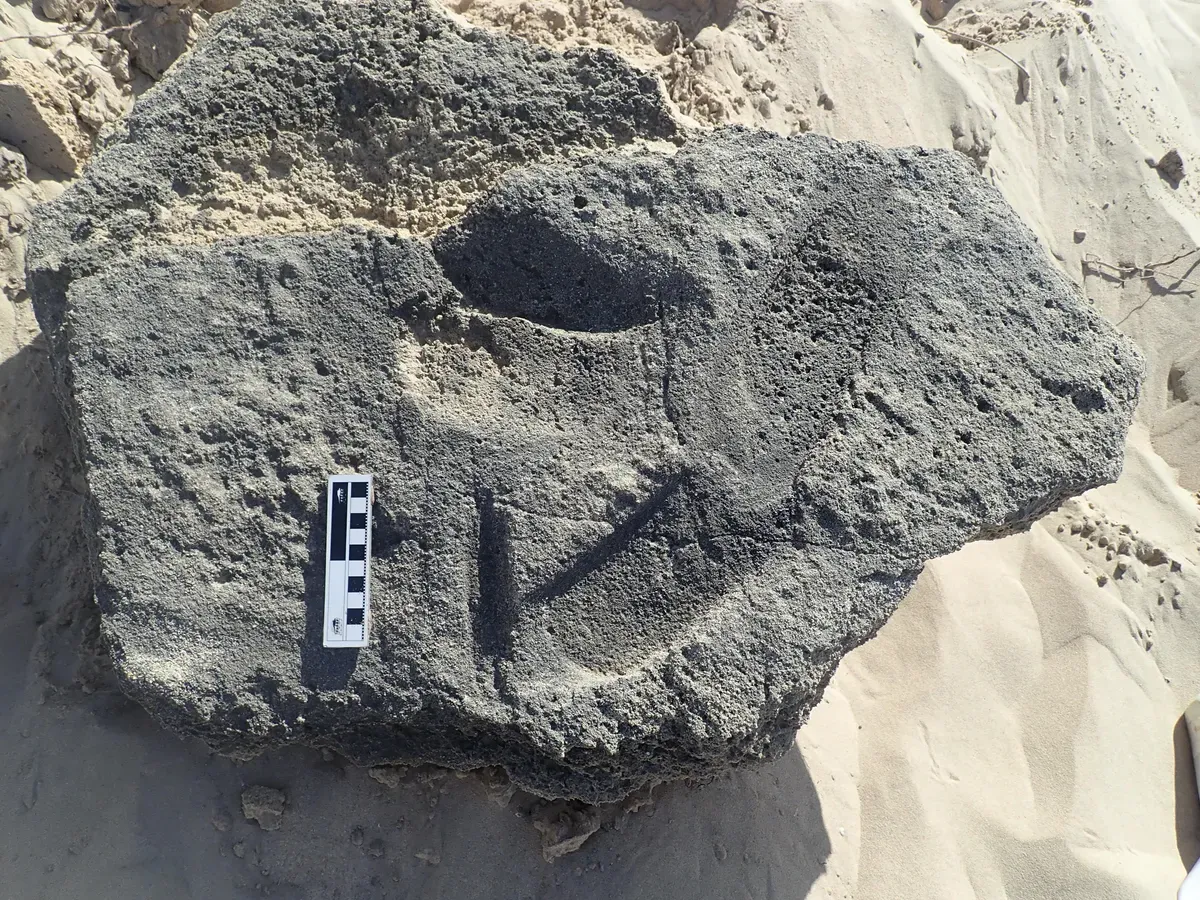A new analysis of ancient footprints discovered in South Africa suggests the people who left these marks may have been wearing hard-soled sandals. While researchers are reluctant to draw any firm conclusions regarding the use of shoes in the distant past, the unusual features of the tracks may provide the earliest evidence that people used shoes to protect their feet from sharp rocks in the Middle Stone Age.
The authors of the study examined well-preserved traces left on stone slabs at three different locations on the Cape coast, none of which were directly dated. Based on the age of other nearby rocks and sediments, the researchers suggest that the tracks found at the site called Kleinkrantz could be between 79,000 and 148,000 years old.
Unlike barefoot human prints, these footprints don’t show the toe, but show “possible evidence of rounded front ends, sharp margins, and strap attachment points.” Similar traces found at an area called Goukamma are estimated to have been left between 73,000 and 136,000 years ago. A final example was found at The Woody Cape in Addo Elephant National Park.
“In all cases, the sizes of the claimed tracks are generally consistent with hominin tracks,” the study authors write.

To test this result, the researchers created their own footprints wearing sandals that resembled two different shoes (both are now kept in museums) historically used by the Indigenous San people of South Africa. Experiments revealed that wearing hard-soled shoes on wet sand leaves sharp-edged prints, no fingerprints, and indentations where leather straps meet the sole, just like the Kleinkrantz marks.
“While we cannot definitively assess the evidence, we interpret the three sites as indicating the presence of shoddy hominin scouts using hard-soled sandals,” the researchers write. Providing a possible justification for the use of such shoes, they point out that foraging on the shore requires climbing sharp rocks, while also risking stepping on sea urchins.
“In the Middle Stone Age, a serious foot injury could have meant death,” they say. That’s why sandals will literally be lifesaving tools.
Given the difficulty of interpreting the rock markings and the fact that no real shoes from the Middle Stone Age have been found, it is understandable why the researchers avoided using more definitive statements. The world’s oldest surviving shoe we have so far is a pair of shoes woven from 10,000-year-old bark from Oregon, and any leather sandal from the period the research suggests would have rotted long ago.
While other specimens from Israel and Armenia are dated to be around 5,500 years old, sandals were found to be present in the mummified Iceman Ötzi’s death a little over 5,000 years ago.
Prior to this study, the earliest indication of shoe use came from two tracks left by Neanderthal children in a cave in Greece 130,000 years ago. Other Neanderthal traces in France have also been interpreted as evidence of shoddy feet, though controversy remains about both cases.
Emphasizing the difficulty of such analysis, the study authors note that the tracks discovered in Nevada in the 1880s were originally attributed to a person wearing sandals, but were later revealed to have been left by a giant sloth. “In this case, the tracks of non-hominin sloths, which are quite different from the tracks of bare-footed hominins, were originally mistaken for shoddy hominin tracks by professional paleontologists,” the researchers write.
Therefore, the authors do not want to make statements that they are not really sure of and avoid the opportunity to make big claims about their findings. But based on their analysis, they suggest that “people may indeed have worn shoes when crossing dune surfaces during the Middle Stone Age.”
The study was published in the journal Ichnos.